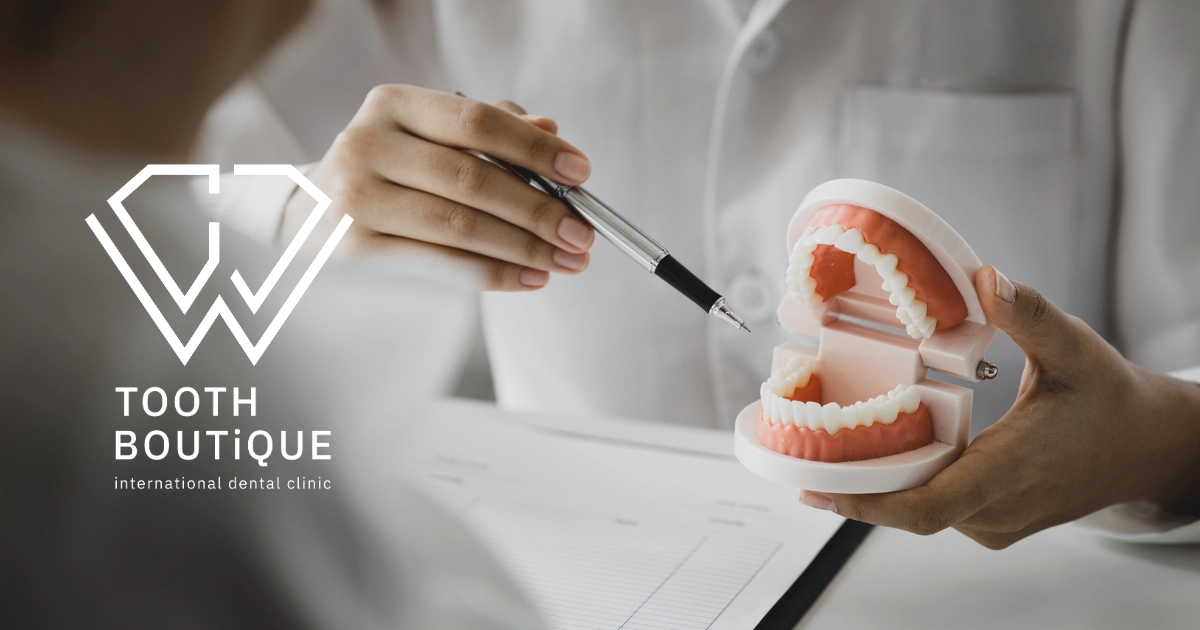What is a dental implant? Who is it suitable for, and what are the procedures?
A dental implant is a replacement for a lost tooth using biocompatible materials implanted into the jawbone. This article explains what a dental implant is, who it is suitable for, and the steps involved in the procedure.
รากฟันเทียม ฟันปลอมWhat is a dental implant?
A dental implant is a dental device designed to replace a missing natural tooth. It is a small screw-like structure made of titanium, which integrates with the jawbone to provide a strong foundation for a prosthetic crown, bridge, or fixed denture. This makes the replaced tooth highly functional and aesthetically similar to natural teeth.
Compared to removable dentures or dental bridges, dental implants offer advantages such as superior stability, convenience, and preservation of jawbone structure. When a tooth is lost, the surrounding bone naturally deteriorates over time. However, a dental implant helps stimulate and prevent bone loss in the area.
Who is a good candidate for dental implants?
Dental implants are an excellent option for those who have lost teeth and want a permanent replacement. However, not everyone is a suitable candidate. A person must have good oral health, strong gums, and sufficient jawbone density to support the implant.
The ideal candidates for dental implants include:
- Individuals who have lost teeth and want a durable and natural-looking replacement
- Those who do not want to use removable dentures
- People who wish to improve their ability to chew food effectively
However, individuals with significant jawbone loss may need bone grafting before implant placement. Those with uncontrolled chronic conditions, such as diabetes, or heavy smokers may face a higher risk of implant failure. It is essential to consult a dentist before making a decision.
The dental implant procedure
The process of getting a dental implant takes time and consists of several steps:
1. Examination and treatment planning
Before placing a dental implant, the dentist will conduct a thorough oral health evaluation, including X-rays or a CT scan, to assess the jawbone structure. If there is insufficient bone, a bone grafting procedure may be required before implant placement.
2. Implant placement
During this step, the dentist surgically places the implant into the jawbone under local anesthesia. The procedure typically takes 30-60 minutes. Afterward, a healing period of 3-6 months is needed for the bone to integrate with the implant, a process called osseointegration.
3. Abutment placement
Once the implant has successfully fused with the bone, the dentist attaches an abutment, which serves as a connector between the implant and the dental crown.
4. Crown placement
After the abutment is in place, the dentist takes an impression of the mouth to create a custom-made crown that fits perfectly and blends naturally with the patient’s other teeth.
5. Post-procedure care
Although dental implants are highly durable, proper care is necessary. Patients should brush and floss daily and visit their dentist for regular check-ups every six months.
On average, dental implants have a long lifespan, but their durability depends on the patient's oral hygiene. With proper care, they can last for several decades.
Recently, a patient came to consult me about dental implants. He told me that he had been using removable dentures but found them inconvenient because they moved while he was talking or eating. I suggested that he consider getting dental implants, but he hesitated, fearing that the procedure would be painful.
I asked him, "Have you ever had a tooth extracted?" He replied, "Yes, but it was painful." I reassured him, "The feeling during implant placement is quite similar to tooth extraction, but the good news is that I will administer local anesthesia, so you won't feel much pain at all." He nodded but still seemed unsure.
Eventually, he decided to go ahead with the procedure. A few weeks later, he came back to see me and said, "Doctor, I should have done this a long time ago! Now I can chew food comfortably." I laughed and replied, "Most of my patients say the same thing after getting implants. I'm glad you're happy with your new teeth!"
Knowledge
Author : Dr. Win Hiriotappa
Published : 18 February 2025 at 16:48
Updated : 5 April 2025 at 06:02





